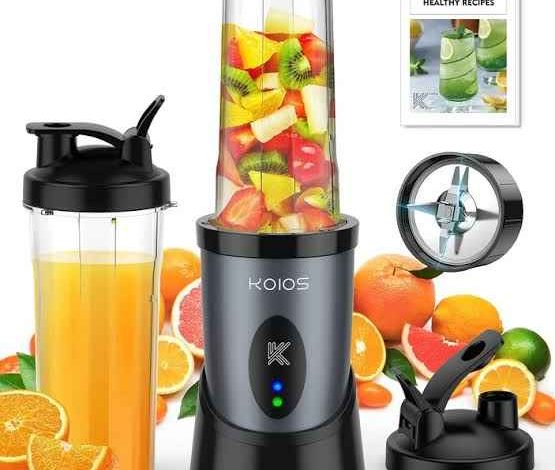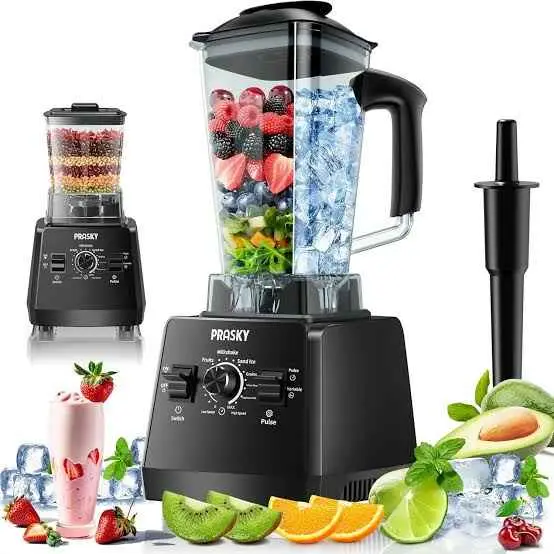Can I Take a Blender on a Plane? [Rules, Guidelines, and Tips]

Ever found yourself wondering if you can pack a blender for your next trip? Blenders are versatile tools, perfect for anyone maintaining a healthy lifestyle or catering to dietary needs while traveling. Whether you’re blending morning smoothies, baby food, or prepping meals on the go, you might be tempted to pack your blender for your trip.
But is it allowed? And if so, how can you ensure your blender arrives safely and without issues? Understanding TSA guidelines, airline policies, and packing techniques is crucial. Traveling with a blender isn’t impossible, but it does require preparation. With the right strategies, you can avoid hassles and keep your travel plans intact.
Are Blenders Allowed on Planes? Understanding TSA and Airline Rules

Blenders are allowed on planes, but there are important restrictions to keep in mind:
- TSA Regulations: The TSA permits blenders in both carry-on and checked luggage. However, blender blades are categorized as sharp objects and are not allowed in carry-on bags. The blender jar and base can travel in the cabin, but the blades must go into checked baggage.
- Airline-Specific Policies: Some airlines may have additional requirements, such as weight or size restrictions for carry-on items. Always verify the specific policies of your airline.
Understanding these rules ensures a smooth experience at the security checkpoint and avoids surprises.
Can I Bring a Blender in My Carry-On Luggage?

If you’re planning to keep your blender close, here’s what you need to know about carry-on luggage:
- Blender Base and Jar: These components are generally allowed in carry-on bags. Make sure the blender is clean to avoid unnecessary inspection.
- Blade Restrictions: The metal blades, considered potential weapons, are prohibited in the cabin. Remove them and pack them securely in your checked luggage.
- Portable Blenders: Many compact, blade-free, or portable blenders (like the BlendJet) are TSA-approved for carry-on bags, making them excellent travel companions.
When in doubt, check with the TSA or your airline before traveling.
Packing a Blender for Checked Luggage: What You Need to Know

Packing a blender for checked luggage requires extra attention to prevent damage or safety concerns:
- Secure the Blades: Wrap sharp blades in thick padding, like bubble wrap or a kitchen towel. Place them in a durable container to protect other items in your bag.
- Protect the Blender: Use cushioning materials, such as clothing or foam, to shield the blender jar and base from impact.
- Label Your Bag as Fragile: Adding a “fragile” tag can alert baggage handlers to take extra care with your suitcase.
By following these steps, you minimize the risk of damage to your blender or injury to handlers.
Domestic vs. International Flights: Do Blender Rules Change?

While TSA rules apply to domestic flights, international travel introduces additional complexities:
- Domestic Flights: Blender rules are generally consistent across U.S.-based airlines. Ensure blades are packed in checked luggage, and follow standard TSA guidelines.
- International Flights: Security regulations may differ at your destination. Some countries have stricter policies regarding sharp objects or electrical appliances.
- Customs Declarations: If you’re carrying a new or high-value blender internationally, you may need to declare it at customs.
Research the policies of both your departure and arrival countries to avoid complications.
Traveling with Battery-Operated and Portable Blenders

Portable, battery-operated blenders are popular among frequent travelers. However, there are specific rules for transporting these devices:
- Lithium Battery Restrictions: Many portable blenders use lithium batteries, which are allowed in carry-on bags but restricted in checked luggage. Batteries must not exceed 100Wh.
- TSA Approval: Check if your blender meets TSA guidelines for portable electronic devices.
- Spare Batteries: Pack extra batteries in a protective case to avoid short circuits or overheating.
These compact devices are convenient but require careful handling to comply with airline safety regulations.
How to Safely Pack a Blender for Air Travel

Proper packing ensures your blender remains intact and compliant with airline rules:
- Disassemble the Blender: Separate the jar, blades, and base for easier packing.
- Wrap Sharp Components: Use bubble wrap or cloth to cover blades, preventing accidental cuts or damage.
- Cushion the Blender Jar and Base: Surround these parts with soft items, such as towels or clothing, to protect them from impact.
- Use a Hard-Shell Suitcase: This provides added protection for fragile items during baggage handling.
- Double-Check Airline Guidelines: Confirm packing requirements with your airline to ensure compliance.
Proper preparation prevents damage and makes security checks more efficient.
Flying with Other Kitchen Appliances: What’s Allowed?

If you’re bringing additional kitchen gadgets, here’s what to consider:
- Allowed in Carry-On Bags: Immersion blenders (without blades), small toasters, and electric kettles are generally permitted.
- Prohibited Items: Knives, large appliances, or gadgets with sharp components must go in checked luggage.
- Checked Luggage Guidelines: Appliances must be packed securely to prevent damage or injury.
Knowing the rules for other appliances ensures you pack appropriately.
Tips for Hassle-Free Security Checks When Traveling with a Blender
Airport security can be stressful, but preparation makes a big difference:
- Be Transparent: Place your blender components in a clear plastic bag or easily accessible part of your luggage for screening.
- Remove Liquids: Empty the blender jar to comply with the TSA liquid limit.
- Inform Security Agents: Notify agents about sharp components or batteries in your bag to avoid confusion.
These steps help you breeze through security without delays.
What to Do If Your Blender Is Confiscated by TSA

If your blender doesn’t meet TSA guidelines, here’s what to do:
- Ask Questions: Politely inquire why the item was confiscated and if alternative solutions exist.
- Ship It Home: If time permits, mail the blender back to your home or destination.
- Learn for Next Time: Review TSA and airline rules to prevent future issues.
Being prepared reduces the likelihood of losing valuable items.
Best Portable Blenders for Air Travel
For frequent flyers, investing in a travel-friendly blender is a game-changer. Look for:
- Compact Designs: Models like the BlendJet 2 fit easily in carry-on luggage.
- Durable Construction: Blenders with shatterproof jars withstand travel rigors.
- Rechargeable Batteries: Choose TSA-approved battery-powered blenders for convenience.
These products combine portability with functionality, making them ideal for travelers.
Can You Rent or Buy a Blender at Your Destination?

Instead of bringing a blender, consider these alternatives:
- Rental Options: Many Airbnb hosts and hotels provide kitchen appliances upon request.
- Buying Locally: Purchase a budget-friendly blender at your destination, especially for longer stays.
- Cost vs. Convenience: Renting or buying avoids luggage space issues but adds expenses.
Evaluate your needs and trip duration to choose the best option.
Frequently Asked Questions About Flying with a Blender
- Can I take a blender without blades in my carry-on? Yes, as long as the blades are packed in checked luggage.
- Are immersion blenders allowed? Yes, provided they lack sharp components.
- What happens if my blender is flagged at security? You may need to re-pack it or remove certain parts.
Making Your Blender Travel Experience Stress-Free
Bringing a blender on a plane doesn’t have to be complicated. By following TSA and airline rules, packing smartly, and exploring travel-friendly options, you can enjoy the convenience of blending on the go.
Now that you know the rules, it’s time to plan your trip with confidence! Double-check airline policies, pack smart, and savor the convenience of having your blender by your side wherever you go.
